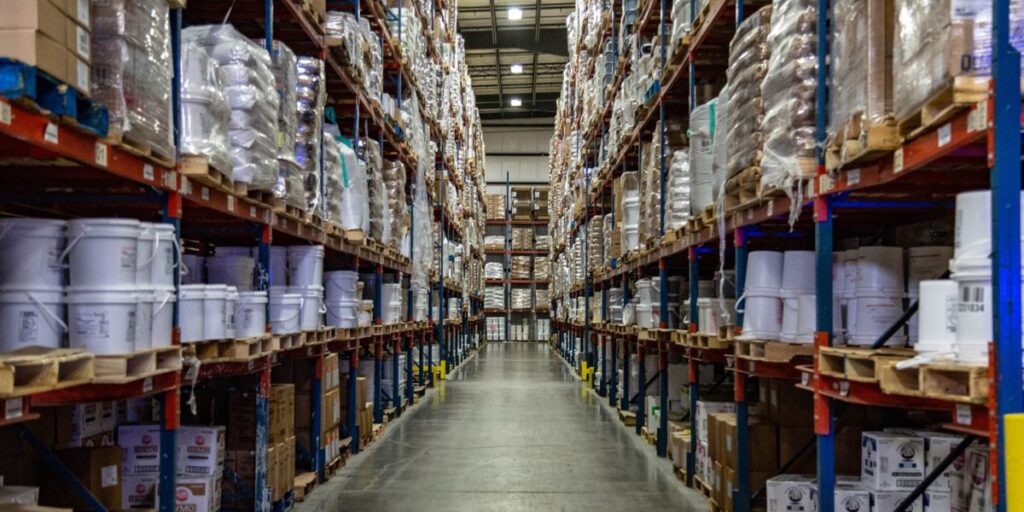In the food service industry, maintaining precise temperature control is essential for preserving product quality, safety, and shelf life. As sustainability becomes a growing priority, many facilities are turning to ammonia refrigeration systems—a solution that’s not only highly efficient but also environmentally responsible.
What is Ammonia Refrigeration
Ammonia (NH₃) is a naturally occurring compound made of nitrogen and hydrogen. It’s colorless, has a sharp, pungent odor, and is commonly found in nature as part of the nitrogen cycle. Ammonia is widely used in agriculture (as fertilizer), cleaning products, and industrial processes—including refrigeration.
In refrigeration, ammonia acts as a heat transfer fluid, absorbing heat from one area and releasing it in another. Its chemical properties make it highly effective at this task, which is why it’s been used in industrial cooling systems for over a century.
What sets ammonia apart is that it’s a natural refrigerant, meaning it doesn’t contribute to ozone depletion or global warming like many synthetic refrigerants do. This makes it an ideal choice for companies looking to reduce their environmental impact.
Why Ammonia?
Ammonia is a natural refrigerant that has been used in industrial refrigeration for over a century. Unlike synthetic refrigerants such as CFCs and HCFCs, ammonia has zero ozone depletion potential (ODP)and zero global warming potential (GWP). This makes it a future-proof choice, especially as regulations continue to phase out harmful synthetic alternatives.
From an environmental standpoint, ammonia is a standout. It’s a naturally occurring compound that biodegrades quickly and returns to the nitrogen cycle when released into the atmosphere. Its use aligns with sustainability goals and helps food service providers reduce their carbon footprint.
Efficiency and Cost Benefits
Ammonia’s thermodynamic properties make it one of the most efficient refrigerants available. It has a high latent heat of vaporization, meaning it can absorb more heat during phase changes than most synthetic refrigerants. This results in lower energy consumption, reduced operating costs, and smaller system components.
For example, ammonia systems are typically 3–10% more energy efficient than systems using synthetic refrigerants. This efficiency translates into significant savings for food processors and cold storage operators—and ultimately lower grocery bills for consumers.
Additionally, ammonia is cost-effective to procure and maintain. A 12,000-pound ammonia charge costs around $24,000, compared to $180,000 for the same amount of R410a, a common synthetic refrigerant.
Safety First: Managing the Risks
While ammonia offers many benefits, it’s important to recognize that it is toxic at high concentrations and mildly flammable. However, its distinct pungent odor acts as a natural warning system, detectable at concentrations as low as 5 parts per million (ppm), allowing for early leak detection.
To ensure safe operation, ammonia refrigeration systems are subject to rigorous safety standards and protocols. Facilities using more than 10,000 pounds of ammonia must comply with OSHA’s Process Safety Management (PSM) and the EPA’s Risk Management Plan (RMP) regulations. These standards require detailed documentation, regular training, and emergency response planning.
Key Safety Practices
Training and Education
Personnel working with ammonia systems must be thoroughly trained in chemical properties, leak detection, and emergency response.
Leak Detection Systems
Advanced sensors and alarms are installed to detect ammonia leaks quickly.
Ventilation and Containment
Proper ventilation and containment systems help mitigate exposure risks.
Emergency Response Plans
Facilities maintain detailed response protocols and coordinate with local emergency services.
Compliance with IIAR Standards
Regular audits ensure systems meet the latest safety standards from the International Institute of All-Natural Refrigeration.
Takeaways
As a food cold storage company, our commitment to sustainability and safety is reflected in our use of ammonia refrigeration systems. These systems allow us to deliver reliable, energy-efficient cooling while minimizing our environmental impact. By investing in natural refrigerants and adhering to the highest safety standards, we’re not only protecting our products—but also our people and the planet.
If you’re looking for a cold storage partner that prioritizes performance, sustainability, and safety, we’re here to help. Contact one of our cold storage representatives today to learn more about our ammonia refrigeration capabilities and how we can support your food service needs.


